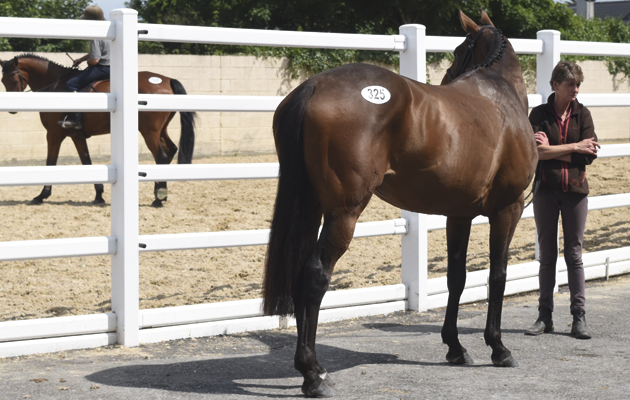You’ve been overseas and found what seems to be the ideal competition horse. But before you bring him home you’d like some reassurance of his state of health and his suitability for the job in hand — a five-stage vetting, ideally, given the amount of money you’re about to spend.
According to UK vet Malcolm Morley MRCVS, of Stable Close Equine Practice, there is potential for confusion when buyers fail to understand the basic differences between the UK’s pre-purchase exam (PPE) and that offered in the country where the horse is based.
What should a prospective purchaser bear in mind — and what can you expect from the process?
A conflict of interest?
Perhaps the seller has already presented you with a clean bill of health for the horse — something you’re inclined to be wary of, given the British preference for instructing a vet of our own choosing.
“A vet in the UK will only act on behalf of the purchaser,” says Malcolm. “But there are differences elsewhere, particularly in Holland, which is a renowned producer of competition horses. Dutch vets can be instructed by the seller or the purchaser. We would consider this a conflict of interest; something we take very seriously in the UK.”
Malcolm adds that in many European countries the examining vet will not offer an opinion on the horse’s suitability for an intended role.
“We do in the UK — and we believe this is important for most purchasers,” he says. “You won’t get that on the Continent, however, because they use what we might call a check-box system. It’s a bit of an over-simplification; basically they’ll work along the lines of, ‘Feet: OK, or not OK’.”
Countries including Germany and Holland rely heavily on X-rays, adds Malcolm, which are assessed according to that country’s scoring system.
“On the face of it, these systems are a good idea,” he says. “But in the UK we prefer to allow the purchaser’s vet to give their own opinion, which takes into account the horse’s history, the intended use and the purchaser’s values, and places a big emphasis on how X-rays relate to the rest of the clinical examination.”

Going Dutch
Dutch vet Jacques Marée, of Veterinary Centre Honselersdijk, explains the thinking behind his country’s approach.
“It doesn’t matter who instructs us,” he says. “There is a standard protocol by which we perform the PPE, and as vets we carry out an independent, objective vetting of the horse in front of us. Is it right to be so mistrusting of a vet performing a PPE for a seller?”
Any equine vet can do the examination, but the “gold standard” in Holland, says Jacques, is the official register of certified PPE vets. Each of the 50 or so vets on this list is independently evaluated every three years for their clinical skills, vetting history and X-ray interpretation. Their premises and facilities must meet certain criteria, so that PPEs can take place at a practice under almost identical circumstances.
“These vets can work for insurance companies and studbooks,” says Jacques. “The financial implications of losing this certificate can be disastrous. Certified PPE vets will do an objective test — it’s not worth the risk otherwise, just to please one buyer or seller.”
Jacques confirms that an opinion is never offered.
“Not all vets are capable of giving this,” he explains. “Supposing you buy a horse with the talent of Totilas, yet you are an average rider. We will say, ‘We’ve examined him today and this is his health status today’ — nothing more, nothing less.
“We do work by a check list, but will only advise in a positive or negative way if there are health issues that we are sure will prevent the horse from doing certain things. It is not our task as a vet to say that the way he’s built makes him more suitable for dressage or showjumping. The buyer or seller must decide that.”
While UK vets feel that certain lamenesses and conditions can only be revealed under saddle, most countries — including Holland — will only lunge the horse.
Jacques explains: “Who should ride the horse? A bad rider can make a good horse go lame, whereas a good one can make him look better. The rider has a huge influence.”

Cultural differences
While knowledge of the system may provide reassurance that you’re getting a quality vetting, will a foreign PPE suffice once the horse is home?
“When we vet a horse in the UK, we take into account whether or not you will be able to get him insured,” says Malcolm. “A problem may be classified overseas as ‘acceptable’, but the UK insurance system might not agree.
“Cultural differences call for clear communication between purchaser, examining vet and insurance company,” he adds. “Sometimes a UK buyer gets a vetting done and is told nothing by the agent or seller except that the horse is OK.
“Make sure the vet speaks a language you understand, so you can talk with them on the phone. If you’re presented with a set of X-rays, ask your UK vet to look at them — even if they’ve been scored as ‘satisfactory’. Work out which X-rays you want and run them past your UK insurer before you buy.”
“I would not go along with an already present PPE,” agrees Jacques.
“Either send your own vet to Holland or, possibly better still, pick a certified PPE vet. Results can then be emailed to your vet in the UK, who can judge the X-rays and clinical results.
“If both vets are looking at the same computer screen, we can discuss what we’re seeing.”
Entering the process armed with the facts seems sensible.
“No one is saying that one system is better than another, but fundamental differences can lead to misunderstandings,” concludes Malcolm.
Ref: Horse & Hound; 23 July 2015

